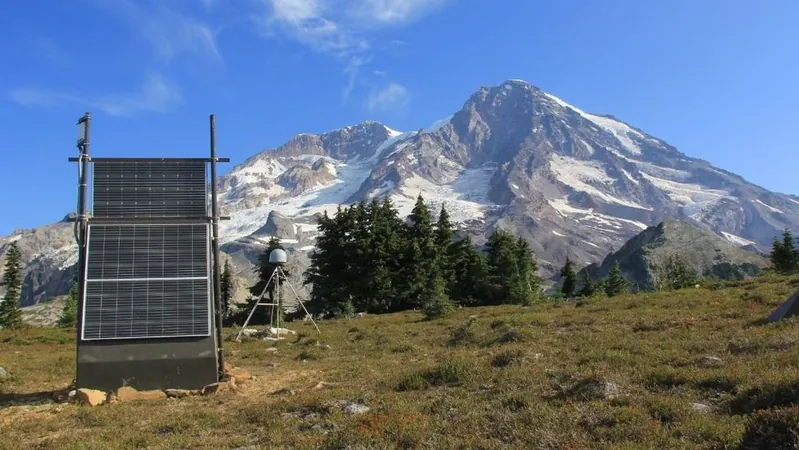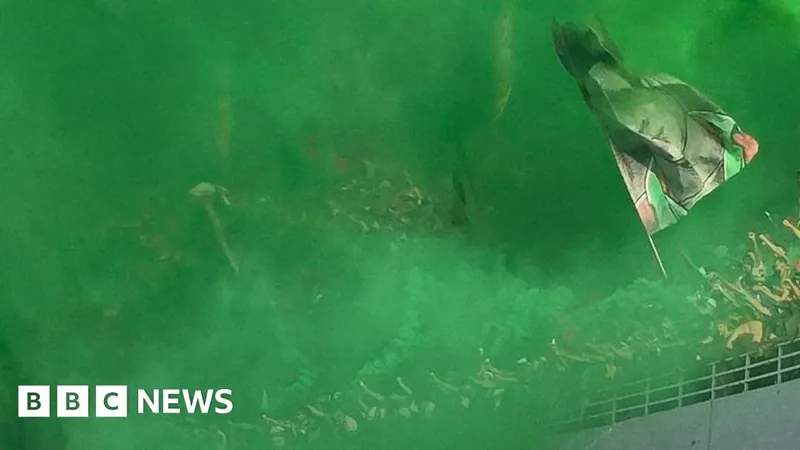
Scientists Keep a Close Eye on Mount Rainier Amid Volcanic Concerns: What You Need to Know!
2025-01-19
Author: Ken Lee
Introduction
Mount Rainier, towering at over 14,000 feet, is not just an icon of Washington state; it is also a vigilant volcano that has scientists on high alert for any signs of potential volcanic activity. Many recall the catastrophic eruption of Mount Saint Helens in 1980, a stark reminder that the Washington Cascades are home to some of the most volatile volcanoes in the United States.
The Volcanoes of Washington
Apart from Mount Saint Helens, Washington is home to Mount Adams, Mount Baker, and Glacier Peak. However, Mount Rainier, located just under 70 miles from Seattle, is particularly noteworthy. Currently, experts from the U.S. Geological Survey (USGS) assure that there’s no immediate cause for concern. 'It’s totally at a state of background activity, so we’re not worried about Mount Rainier right now,' stated Alex Iezzi, a research geophysicist with the USGS.
Monitoring Efforts
Iezzi and his dedicated team continuously monitor Mount Rainier’s activity using state-of-the-art infrasound and seismic sensors. These tools detect any underground movement that could indicate magma rising towards the surface, while gas sensors analyze changes in volcanic fumes. GPS technology is employed to measure any ground deformation that might hint at volcanic unrest. With this extensive monitoring system in place, researchers believe they would likely have months' worth of warnings should a major eruption be imminent.
Potential Eruption Impacts
Should an eruption occur, the fallout could extend well beyond the mountain itself. Prevailing winds could carry volcanic ash to populated areas like Seattle, although the risk of lava flows reaching the city is minimal. However, nearby communities, such as Puyallup and Orting, face grave hazards from the potential dangers of mudflows, known as lahars, which are formed by melting glaciers and volcanic debris.
The Danger of Lahars
According to the USGS, Mount Rainier ranks as the third most dangerous volcano in the United States, just behind Mount Saint Helens and Hawaii’s Kilauea, due to its likelihood of large, destructive eruptions and its proximity to densely populated regions. A report indicated that such activity could pose a significant threat to the millions living in the southern and eastern parts of the Seattle metro area.
'The main hazard at Mount Rainier is that while its eruptions are generally less explosive, they can generate lahars that can travel downstream into populated areas,' said Iezzi. Lahars can be incredibly destructive, capable of sweeping away anything in their path. Historical eruptions, such as those from Mount Saint Helens, have seen lahars travel up to 60 miles and devastate entire neighborhoods.
Community Preparedness
To prepare for such risks, communities near Mount Rainier actively participate in lahar evacuation drills. 'This year alone, around 45,000 people took part in drills in Orting and Puyallup,' noted Iezzi, illustrating the seriousness with which residents regard the potential danger.
Lahar Risks Beyond Eruptions
Interestingly, lahars can occur independently of volcanic eruptions, triggered instead by landslides. This phenomenon, known as 'no notice lahars,' is why additional monitoring sensors have been installed in critical drainage areas of Mount Rainier's slopes.
Conclusion
In conclusion, while Mount Rainier has lain dormant for nearly 1,000 years, experts remain vigilant. The USGS team is committed to closely monitoring this giant volcano and will continue to alert the public to any changes that could signal an escalation in activity. The stakes are high, and preparedness is key for the communities surrounding this majestic yet potentially hazardous natural wonder. Stay tuned for updates, as the situation can change rapidly—and you won’t want to be caught off guard!




 Brasil (PT)
Brasil (PT)
 Canada (EN)
Canada (EN)
 Chile (ES)
Chile (ES)
 Česko (CS)
Česko (CS)
 대한민국 (KO)
대한민국 (KO)
 España (ES)
España (ES)
 France (FR)
France (FR)
 Hong Kong (EN)
Hong Kong (EN)
 Italia (IT)
Italia (IT)
 日本 (JA)
日本 (JA)
 Magyarország (HU)
Magyarország (HU)
 Norge (NO)
Norge (NO)
 Polska (PL)
Polska (PL)
 Schweiz (DE)
Schweiz (DE)
 Singapore (EN)
Singapore (EN)
 Sverige (SV)
Sverige (SV)
 Suomi (FI)
Suomi (FI)
 Türkiye (TR)
Türkiye (TR)
 الإمارات العربية المتحدة (AR)
الإمارات العربية المتحدة (AR)